 UPDATE : we have a whole (so to speak) new take on making a starter. See our sourdough starter video for a better way to do this.
UPDATE : we have a whole (so to speak) new take on making a starter. See our sourdough starter video for a better way to do this.
Back in March we showed how to make a sourdough starter with white flour. This month we converted a white starter over to whole wheat and have baked many successful loaves of bread with it. The reason that we have to do this conversion rather than starting out with whole wheat flour is that whole wheat tends to get moldy before the beneficial cultures have a chance to take over.
You can use our “Not Very Whole Wheat Loaf” recipe to bake loaves with a whole wheat starter by simply substituting it for the white flour starter. You’ll end up with a loaf that’s about half white, half whole wheat.
To convert a starter from white flour to whole wheat flour do the following:
1. Begin with your white flour starter. Our recipe for creating a white flour starter is in a previous post.
2. Instead of feeding your white flour starter with the usual routine of a half cup of white flour and a half cup of water each day switch to feeding it a half cup of whole wheat flour and a half cup of water.
3. After about a week you will have “converted” your white starter to a wheat starter–hallelujah!
As we emphasized with our recipe for white starter, you must feed the starter every single day or it will begin to rot. This is particularly important with whole wheat flour which will go bad much more quickly. If you can’t keep up with the feeding you can temporarily store the starter in the refrigerator, but for no more than two weeks with whole wheat starter. White starter will last in the fridge for longer.
If this turns your crank, you can sit around your compound watching your sourdough starter bubble while geeking out on Cornell Professor Steven Laurence Kaplan’s book Good Bread is Back, which details the revival of sourdough bread making in France in the early 1990s. Kaplan notes that sourdough,
“rises less than a dough made with baker’s yeast and also more slowly. Its crust is thicker. It keeps significantly longer. It has greater nutritional value, partly because it is richer in certain vitamins and enzymes that are by-products of lactic fermentation, and it contains less phytic acid, which blocks mineral absorption.”
So get that starter going and forget about that crap bread at the supermarket!
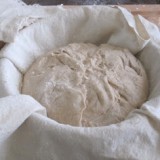
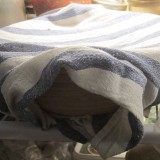
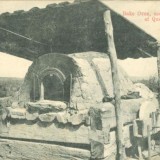
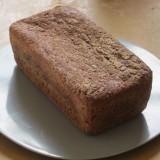
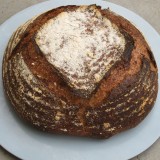
Keep the starter-related posts a-coming, folks. I love ’em. And I’ll be joining Fermentation Summer just as soon as I find a worthy receptacle for my experiment — I’m hoping the friendly neighborhood thrift store will have a quart-size mason jar with my name on it, so I don’t have to buy a 12-pack at the grocery store. I’m rambling, but just wanted to say love the the bready blogging.
Regarding the mason jars— we thought we’d never use our 12 pack, but once you begin fermenting, you just can’t stop. All of our jars are in rotation now.
They’re also good for storing leftovers, holding dry goods in the pantry (moths can’t get in them) and for flowers. Go on, get the 12 pack!
Happy fermenting!
hi!
so, how do i keep my (not so very) whole wheat starter alive forever and ever? i’m new to the bread starter gig. after my first loaf do i use old dough instead of starter (and if so how do i store the dough?)? do i keep the starter in the fridge and feed it every week (though you say it’ll die after two weeks)? i’d like to keep it around and give it to friends, but i’m hampered by my inexperience.
thanks!
Hi Heather,
You have the choice of keeping it on the counter and feeding it every day or keeping it in the fridge and feeding it periodically. If you want to bake with it you need to take it out of the fridge and feed it for a day or two. And it’s actually good to throw the whole starter out every year or so and start a new one. It eventually loses its vigor.
thank you! it’s bubbling away next to my stove.
How do you know when your whole wheat sarter has gone moldy.